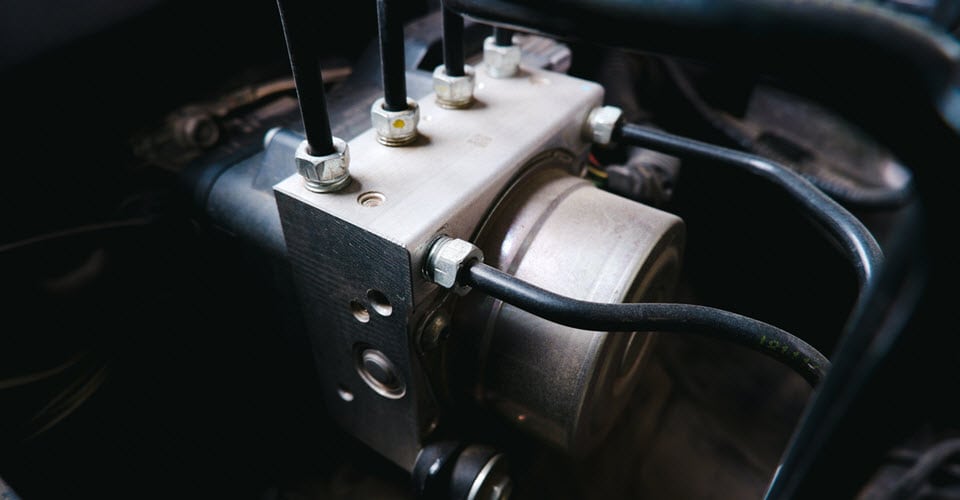Understanding and Maintaining the ABS Pump: Essential Guide

Strong 8k brings an ultra-HD IPTV experience to your living room and your pocket.
The Anti-lock Braking System (ABS) is the most important safety feature in modern cars since antilock brakes help prevent loss of capacity and control while braking hard. At the heart of this system is the ABS pump, which modulates brake pressure to each wheel. Here we discuss the role of ABS pump in each car, ABS pump problems and their solutions, and other ways of maintaining your vehicle’s ABS in good condition.
What is an ABS Pump?
The ABS pump is an important part of the ABS [an anti-lock braking system] to prevent wheel lock-up by controlling brake pressure during heavy braking conditions. Interface with ABS module and ABS sensor.ADC to regulate brake fluid pressure controls each wheel traction and maintaining the steering control by driver.
Key Features of the ABS Pump
Modulation of Brake Pressure
By instantaneously adjusting brake pressure to prevent the wheels locking up, the ABS pump stabilises a vehicle under emergency braking to help maintain steering control.
Enhanced Vehicle Control
Thanks to the ABS pump preventing the wheels from locking up, the driver is able to keep steering control and avoiding skidding, which enhances safety.
Integration with Other Systems
Other vehicle safety systems such as Electronic Stability Control (ESC) and Traction Control operate in tandem with the ABS pump to maintain vehicle stability and control.
Common Issues with the ABS Pump
ABS Warning Light
Description: The ABS warning light on the dashboard illuminates.
Possible causes: Faulty ABS pump, ABS module, ABS speed sensors or electrical problem.
Reduced Braking Performance
Description: The vehicle exhibits longer stopping distances or poor braking response.
Possible Causes: Malfunctioning ABS pump, air in the brake lines, or worn brake components.
Pulsating Brake Pedal
Description: The brake pedal pulses or vibrates when the ABS is activated.
Potential Causes: That’s a normal sign that your ABS is working, but a marked rapid pulsation can point to problems with the ABS pump or sensors.
Noisy Operation
Description: Unusual noises, such as grinding or clicking, from the ABS pump during operation.
Possible Causes: Worn or damaged components within the ABS pump.
Brake Fluid Leaks
Description: Visible brake fluid leaks around the ABS pump or under the vehicle.
Possible Causes: Damaged seals or connections in the ABS pump.
Troubleshooting ABS Pump Issues
Perform a Diagnostic Scan
To figure out which switch is malfunctioning, you will need to connect an OBD-II scanner to the car’s computer and read the diagnostic trouble codes (DTCs) associated with the ABS system. Each code will correspond to an ABS input switch.
Tip: Many auto parts stores offer free diagnostic scans.
Inspect Wheel Speed Sensors
Action: Inspect the wheel speed sensor for dirt, damage or loose connections. Clear or replace bad sensors.
Hint: Speed sensors near each wheel are critical to proper ABS operation.
Check Brake Fluid Levels
Action: Ensure the brake fluid level is correct. If the level is too low, it can trigger the ABS warning light, and will affect the system’s operation.
Tip: Use the brake fluid type specified by your vehicle’s manufacturer.
Inspect Brake Components
Action: Check the brake pads, rotors and calipers for wear and damage. Replace any worn or damaged components.
Tip: Regular brake inspections are crucial for maintaining ABS functionality.
Test the ABS Pump
Action: If you have a multimeter or another diagnostic tester, see if the ABS control pump can be inspected.
Tip: Consult the vehicle’s service manual for specific testing procedures and specifications.
Maintenance Tips for the ABS Pump
Regular Brake Fluid Changes
Action: Change brake fluid following the schedule outlined by the vehicle’s manufacturer so as to avoid loss of lubrication and avoid powdery residue from accumulating.
Tip: Use the brake fluid type specified by the vehicle manufacturer.
Periodic Inspections
Action: Make sure the ABS pump is part of your routine maintenance inspections of the brakes. Check for normal wear, leaks, or other problems.
Tip: Schedule a professional inspection every 12,000 miles or as recommended by the manufacturer.
Keep Sensors Clean
Action: Clean the wheel speed sensors regularly to make sure they feed the proper data to the ABS.
Tip: Use a soft brush and mild cleaner to gently clean the sensors.
Monitor Brake Performance
Watch for deterioration in braking performance, such as increased stopping distances or abnormal noises.
Tip: Address any issues promptly to prevent further damage to the ABS system.
Avoid Aggressive Driving
Action: Avoid aggressive driving that puts a strain on your car’s braking system – for example, fast acceleration and hard braking.
Hint: Drive gently and moderate your speeds to increase the brake life of your ABS pump and other brake components.
When to Seek Professional Help
Although a lot of maintenance and trouble-shooting can be done by the owner operator, especially early-model vehicles, anything that involves the ABS pump often requires an expert. For problems with your ABS pump, call a qualified mechanic if you experience:
Persistent ABS warning lights despite basic troubleshooting.
Unresolved diagnostic trouble codes.
Significant reduction in braking performance.
Unusual noises or vibrations during braking.
Conclusion
The primary component of your brake system is the ABS pump, and it’s crucial to keep it in good operating condition so that you can stop when having to so do in the face of hard braking. But do you know how various problems with the ABS pump usually manifest, and what steps you can take to diagnose why they are occurring and resolve them? This guide can help you do just that, and it also offers you a few key steps to follow to make sure that your ABS pump lasts as long as possible. This part of your braking system is a crucial safety feature, so it’s important to address any issues with it when they occur and to follow the maintenance tips to make sure they don’t happen. What can go wrong with the ABS pump, and what can you do to minimise the risk of problems arising? What are some steps to take to help your ABS pump stand the test of time? Here are the main points. Brake fluid should be changed every two years and thoroughly flushed every four years to ensure optimal performance of the ABS pump. The pump network should be checked out yearly, or every time you have your brakes serviced. Brake sensors should be inspected regularly, and dirt shouldn’t be allowed to build up wherever it can cause problems. Arrange to get skilled assistance if your ABS warning light illuminates. Watch out for any unusual noises or sounds from your brakes and take notice of any changes in braking performance. Avoid aggressive driving.
Note: IndiBlogHub features both user-submitted and editorial content. We do not verify third-party contributions. Read our Disclaimer and Privacy Policyfor details.







